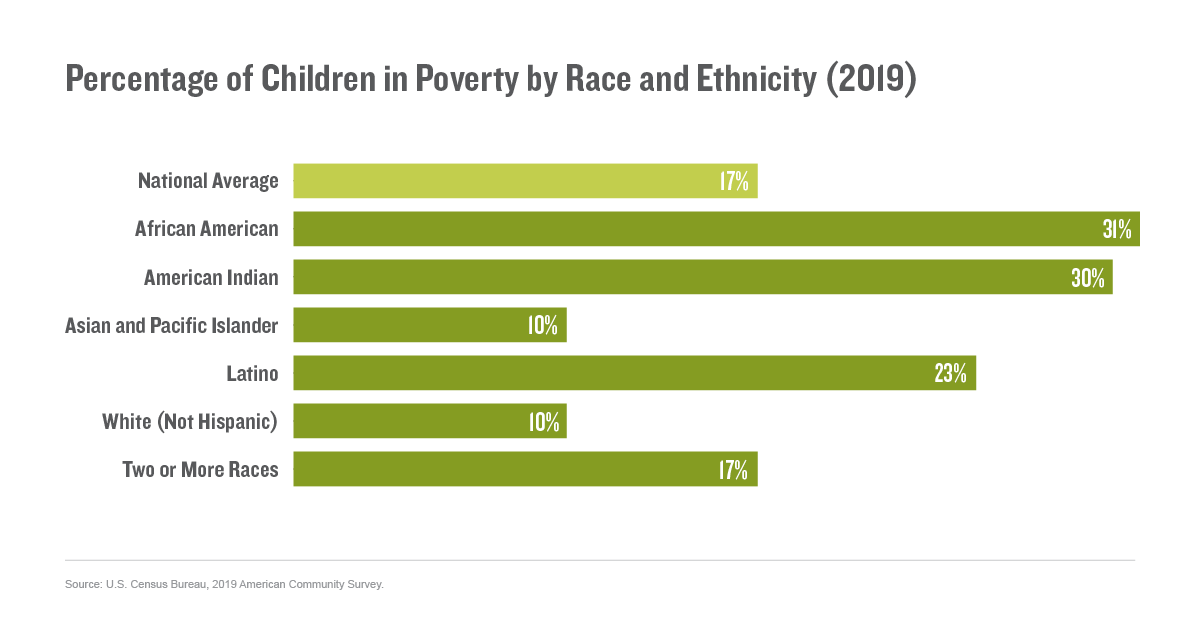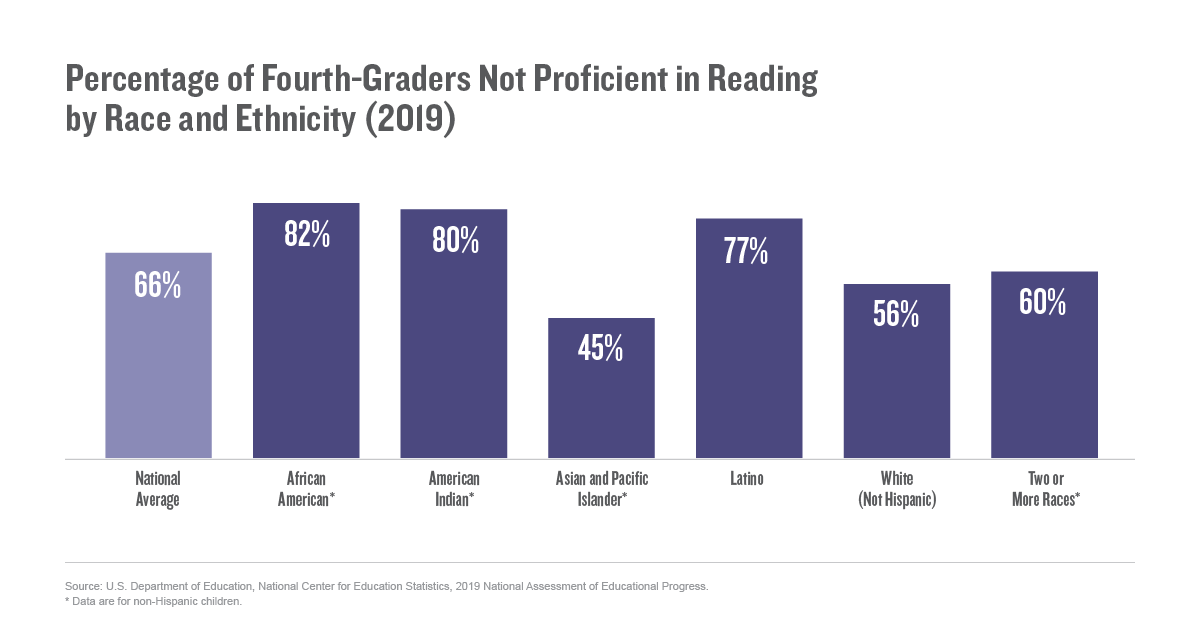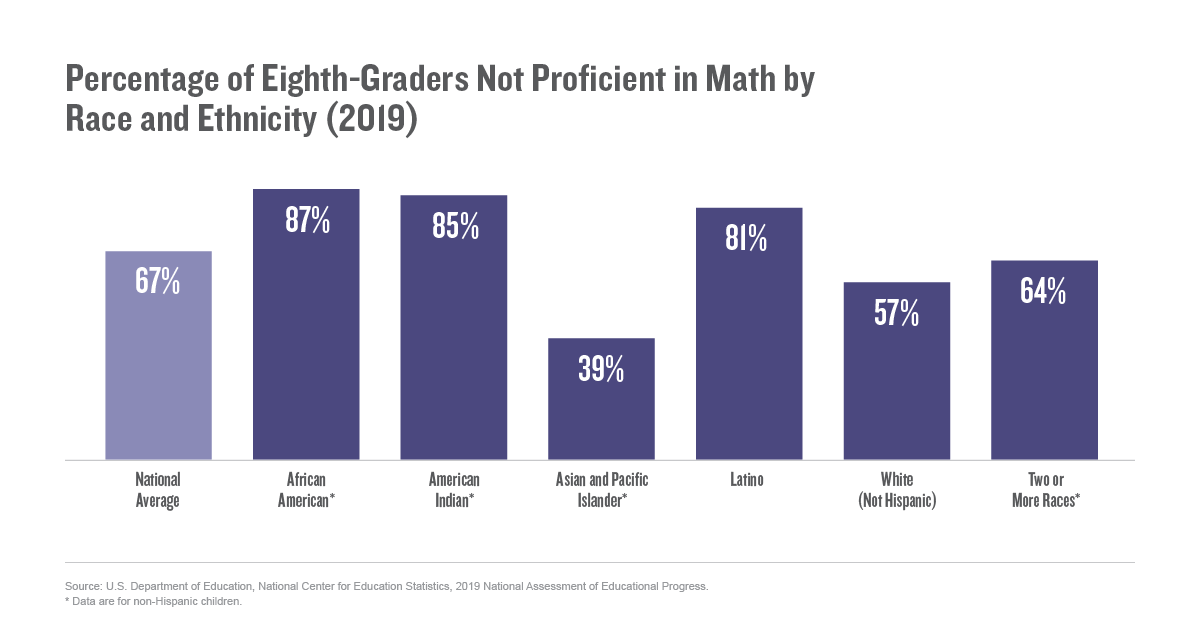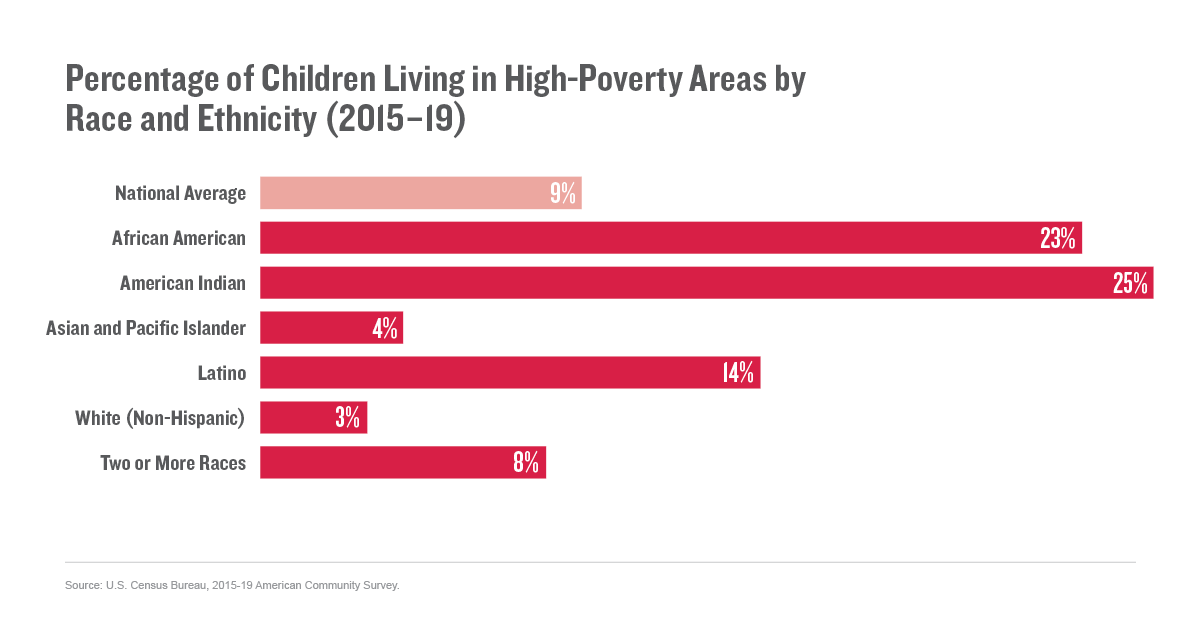Which Group Is the Most Likely to Have Low-birth-weight Babies?
Summary
The 32nd edition of the Annie E. Casey Foundation's KIDS COUNT® Data Book describes how children across the United States were faring before — and during — the coronavirus pandemic.
This year's publication continues to deliver the Foundation's annual state rankings and the latest available data on child well-being. It identifies multiyear trends — comparing statistics from 2010 to 2019. In addition, the report shares data on how families endured throughout the pandemic.
How Kids and Families Have Weathered the Pandemic
Every child needs food, health care and safe and stable housing. Millions of households with children already lacked these necessities before the pandemic, and this economic and public health catastrophe brought millions more face-to-face with challenges ranging from lost health insurance and bare pantries to the threat of homelessness due to eviction or foreclosure.
An additional area of concern: Students are completing a second academic year disrupted by COVID-19, undermining academic performance and altering post-high school plans.
Recommendations for Recovery
The nation will not recover from this crisis without innovative public policy. Several of the Foundation's federal policy recommendations have already been enacted through the 2020 CARES Act and with 2021's American Rescue Plan. Of particular note is the historic expansion of the federal child tax credit, which is expected to cut the child poverty rate by more than half. Unfortunately, the expansion is currently slated for only one year.
To continue progress already made on recovery, the Foundation recommends: making the expansion of the federal child tax credit permanent; strengthening state and local policies affecting kids and families; and prioritizing racial and ethnic equity in policymaking.
State Rankings
This year, New England states hold two of the top three spots for overall child well-being. Massachusetts ranks first, followed by New Hampshire and Minnesota. Louisiana (48th), Mississippi (49th) and New Mexico (50th) are the three lowest-ranked states.
States in Appalachia, as well as the Southeast and Southwest — where families have the lowest levels of household income — populate the bottom of the overall rankings. In fact, except for Alaska, the 17 lowest-ranked states are in these regions.
Racial Inequities in Child Well-Being
Despite gains for children of all races and income levels during the reporting period, the nation's racial inequities remain deep, systemic and stubbornly persistent. Data suggest that we as a nation fail to provide children of color with the opportunities and support they need to thrive. States are failing to dismantle barriers that African American, American Indian and Latino children especially encounter. As a result, nearly all index measures show that children experience disparate outcomes in spite of their potential.
In 14 states, the District of Columbia and Puerto Rico, kids of color were the majority of the child population in 2019. The future success of our nation depends on our ability to ensure all children have the chance to be successful.
2021 State Data Profiles on Kids' Well-Being
View the national data profile (also available in Spanish) or download your state's data profile as a PDF below:
- Alabama
- Alaska
- Arizona
- Arkansas
- Arkansas (Spanish)
- California
- California (Spanish)
- Colorado
- Colorado (Spanish)
- Connecticut
- Connecticut (Spanish)
- Delaware
- District of Columbia
- District of Columbia (Spanish)
- Florida
- Florida (Spanish)
- Georgia
- Georgia (Spanish)
- Hawaii
- Idaho
- Illinois
- Illinois (Spanish)
- Indiana
- Indiana (Spanish)
- Iowa
- Kansas
- Kentucky
- Kentucky (Spanish)
- Louisiana
- Maine
- Maryland
- Maryland (Spanish)
- Massachusetts
- Michigan
- Minnesota
- Mississippi
- Missouri
- Montana
- Nebraska
- Nevada
- Nevada (Spanish)
- New Hampshire
- New Jersey
- New Jersey (Spanish)
- New Mexico
- New Mexico (Spanish)
- New York
- New York (Spanish)
- North Carolina
- North Dakota
- Ohio
- Oklahoma
- Oklahoma (Spanish)
- Oregon
- Oregon (Spanish)
- Pennsylvania
- Pennsylvania (Spanish)
- Puerto Rico
- Puerto Rico (Spanish)
- Rhode Island
- Rhode Island (Spanish)
- South Carolina
- South Dakota
- Tennessee
- Tennessee (Spanish)
- Texas
- Texas (Spanish)
- Utah
- Utah (Spanish)
- Vermont
- Virginia
- Washington
- West Virginia
- Wisconsin
- Wisconsin (Spanish)
- Wyoming
- Wyoming (Spanish)
Trends and Overall Child Well-Being
The Foundation derives a composite index of overall child well-being for each state by combining data across four domains: (1) Economic Well-Being, (2) Education, (3) Health and (4) Family and Community. These composite scores are then translated into a state ranking for child well-being. Explore overall child well-being on the interactive KIDS COUNT Data Book.
Economic Well-Being
To help children grow into prepared, productive adults, parents need jobs with family-sustaining pay, affordable housing and the ability to invest in their children's future. Explore economic well-being data on the interactive KIDS COUNT Data Book.
Poverty Is a Threat
Growing up in poverty is one of the greatest threats to healthy child development. It increases the likelihood that a child will be exposed to factors that can impair brain development and lead to poor academic, cognitive and health outcomes. It also can result in higher rates of risky health-related behaviors among adolescents.
The official poverty level in 2019 was $25,926 for a family of two adults and two children.

American Indian, Black and Latino Kids More Likely to Live in Poverty
Nationally, 17% of children (12 million) lived in families with incomes below the poverty line in 2019.
The poverty rate among African American and American Indian children (31% and 30%, respectively) was three times the rate for white and Asian and Pacific Islander children (10% for both) in 2019. The poverty rate for Latino kids (23%) was also high.
Benefits of Secure Employment
Secure employment is a key contributor to the financial stability and well-being of families. Employment insecurity and the accompanying income loss can disrupt daily living and relationships and limit families' access to resources to invest in their children's development, which can, in turn, diminish children's achievement in school and chances of future success.
In 2019, more than one in four children (18.8 million) lived in families where no parent had full-time, year-round employment.
Disconnected Youth
Teens ages 16 to 19 who are not in school or working are at high risk of experiencing negative outcomes as they transition to adulthood.
Nationally, 6% of teens, ages 16–19, or 1.1 million youth, were not in school or working in 2019. At 4%, Connecticut, Massachusetts, Minnesota, Nebraska, North Dakota and Vermont had the lowest rate of teens not in school or working in 2019. In contrast, Alaska had the highest rate, at 12%.
Education
The early years of children's lives set the foundation for their lifelong success. Closing significant academic achievement gaps is vital to ensuring that the nation's future workforce can continue to compete on a global scale. Explore education data on the interactive KIDS COUNT Data Book.
Preschool Participation Rates
In 2017–19, Connecticut had the lowest share of 3- and 4-year-olds not in school, at 34%. The state with the highest percentages of young children not in school in 2017–19 was North Dakota (68%). Although the District of Columbia is not ranked among states, it had the best rate, at 21% — a result of the city's free, universal preschool for 3- and 4-year-olds.
Roughly half of white and multiracial 3- and 4-year-olds were not in any school programs; the percentage was slightly lower for African American (48%) and Asian and Pacific Islander kids (45%). The rates were noticeably higher for Latino (58%) and American Indian (55%) children.

Most Fourth-Graders Not Proficient Readers as Disparities Persist
Sixty-six percent of fourth-graders in public school were reading without proficiency in 2019, an alarming rate though slightly improved from 2009, when 68% scored not proficient.
In 2019, 82% of African American, 80% of American Indian, 77% of Latino and 60% of multiracial fourth-graders were not proficient in reading, compared with 56% of white and 45% of Asian and Pacific Islander students.

Eighth-Grade Math Proficiency Rates by Race
In 2019, 39% of Asian and Pacific Islander and 57% of white eighth-graders scored below proficiency, compared with 87% of African American, 85% of American Indian and 81% of Latino eighth-graders.
Eighth-grade math achievement improved for African American, Asian and Pacific Islander, Latino and multiracial students between 2009 and 2019 but remained the same for white students while worsening significantly for American Indian children.
Health
Good health is central to a child's overall development, and ensuring that kids are born healthy is an important first step toward lifelong success. Explore health data on the interactive KIDS COUNT Data Book.
Why Birth Weight Matters
Birth weight is an important indicator of an infant's health. Babies born at a low birth weight (less than 5.5 pounds) have a high probability of experiencing developmental problems and short- and long-term disabilities. They also are at greater risk of dying within the first year of life.
Alaska had the lowest percentage of low birth-weight babies in 2019 — 6.3% of live births — while Mississippi had the highest, at 12.3%.

African American Newborns Most Likely to Have Low Birth Weight
Among racial and ethnic groups, African American babies were most likely to be born at a low birth weight, at 13.8% of live births in 2019. This number was close to twice the rates for Latino (7.6%) and white (6.9%) infants. The rate increased from 2016 among all groups except for the rate for white babies, which declined slightly.
Why Health Insurance Matters
Children with health insurance are more likely to have a regular source of health care they can access for preventive care services and developmental screenings, to treat acute and chronic conditions or to address injuries when they occur.
American Indian (14%) and Latino (9%) children were far more likely to be uninsured than their African American (5%), and Asian and Pacific Islander, multiracial and white peers — each of whom had uninsured rates of 4%.
Child and Teen Death Rate Explained
The child and teen death rate (deaths per 100,000 children ages 1 to 19) reflects a broad array of factors: physical and mental health; access to health care; community issues, such as violence and environmental toxins; use of safety practices; and, especially for younger children, the level of adult supervision. Accidents, primarily those involving motor vehicles, were the leading cause of death for children and youth, accounting for 29% of all deaths among children ages 1 to 14.
A Declining Death Rate
In 2019, 19,431 children and youths ages 1 to 19 died in the United States, which translates into a mortality rate of 25 deaths per 100,000 children and teens. The rate has declined dramatically since 1990, when it was 46 per 100,000.
Massachusetts and Rhode Island had the lowest rate, at 15 deaths per 100,000 children and youths in 2019. At the other end of the spectrum, Alaska had a child and teen death rate of 53 per 100,000.
Why Weight Matters
Being overweight or obese during childhood can have harmful effects on a child's overall health and well-being and can have everlasting impact on their health as adults. Children who struggle with their weight are at higher risk for a range of health problems, including asthma, heart disease, diabetes and cancer. They are also more likely to experience social and emotional difficulties, such as stigmatization and low self-esteem.
Family and Community
Children who live in nurturing families and supportive communities have stronger personal connections and realize higher academic achievements. Explore Family and Community data on the interactive KIDS COUNT Data Book.
Percentage of Children in Single-Parent Families Lowest in Utah
The percentage of children living in single-parent families has remained unchanged between 2010 and 2019. In 2019, 34% of children (23.8 million) lived in single-parent families. At the state level, the percentage of children living in single-parent families in 2019 ranged from a low of 19% in Utah to a high of 47% in Louisiana. The share was even higher in Puerto Rico (63%) and the District of Columbia (53%).
Fewer Kids Living in High-Poverty Communities
During the period from 2015–19, 9% of children lived in high-poverty areas, a total of 6.7 million children. Between 1990 and 2000, the likelihood that a child would grow up in an area of concentrated poverty declined from 11% to 9%. After rising as high as 14% in 2010–14, the rate leveled off and has now dropped for four consecutive years, and is now below prerecession levels.

American Indian and Black Kids Nearly Eight Times More Likely to Live in Concentrated Poverty
High-poverty neighborhoods — where poverty rates for the total population are 30% or more — come with a number of challenges that affect the children and families who live there. American Indian (25%), African American (23%) and Latino (14%) children were much more likely to have lived in high-poverty areas than their multiracial (8%), Asian and Pacific Islander (4%) and white (3%) counterparts.
Subscribe to our newsletter to get our data, reports and news in your inbox.
⨯
Which Group Is the Most Likely to Have Low-birth-weight Babies?
Source: https://www.aecf.org/resources/2021-kids-count-data-book
0 Response to "Which Group Is the Most Likely to Have Low-birth-weight Babies?"
Post a Comment